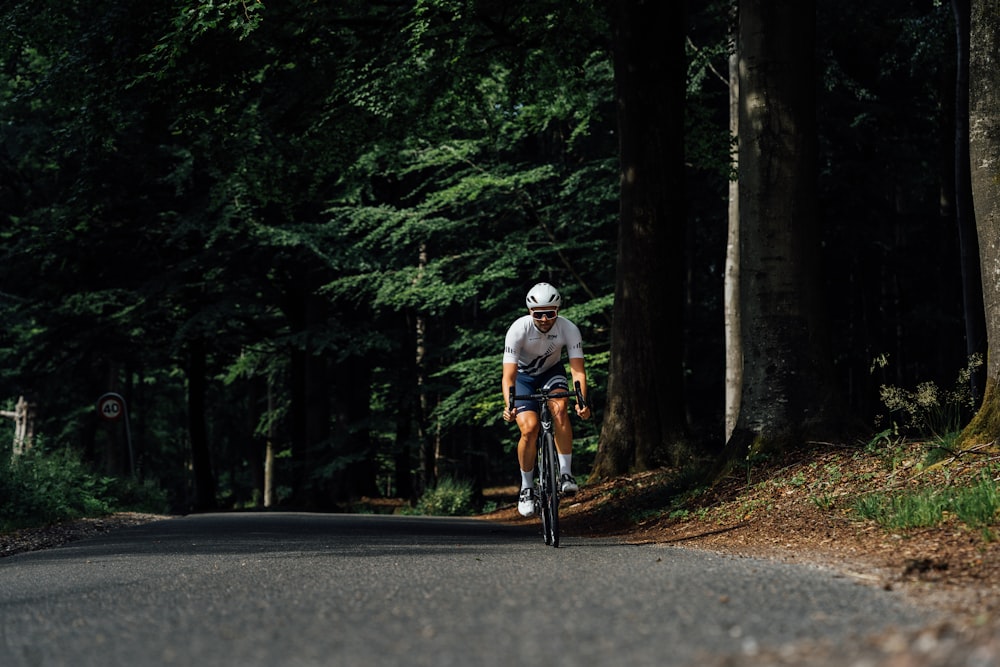How to Create a Cycling Training Plan
A training plan is a very helpful tool to use when you are trying to achieve a fitness goal for an upcoming cycling event.
Creating a training plan can be overwhelming if you have never done it. To assist you, we’ve put together this guide to help you understand the aspects of a good training plan, and how to build one for yourself.
With a training schedule, you can purposefully work on your areas of weakness and improve at a much faster rate than is possible with an unstructured cycling routine.
This purposeful practice, logical progression, evaluation, recovery, and adaptation are the foundations of making progress in any sport, and cycling is no different.
First, let’s take a look at some of the important concepts that go into making a bike workout plan.
Table of Contents
1. What to Know Before Building a Training Plan
2. The Important Components of a Training Plan
3. Building Your Own Training Plan
1. Things to Consider Before Building a Training Plan
Heart Rate Zones, Functional Threshold Power, & Power Training
Training for any sport is becoming more and more scientific as each year passes.
For amateur athletes or those training for non-competitive reasons, a structured training plan will suffice without the fancy stuff.
Using a rate of perceived exertion (RPE) scale is a perfectly effective (tool-free) way of gauging effort for the average person. This is used widely across exercise training and is what we will refer to for this article.
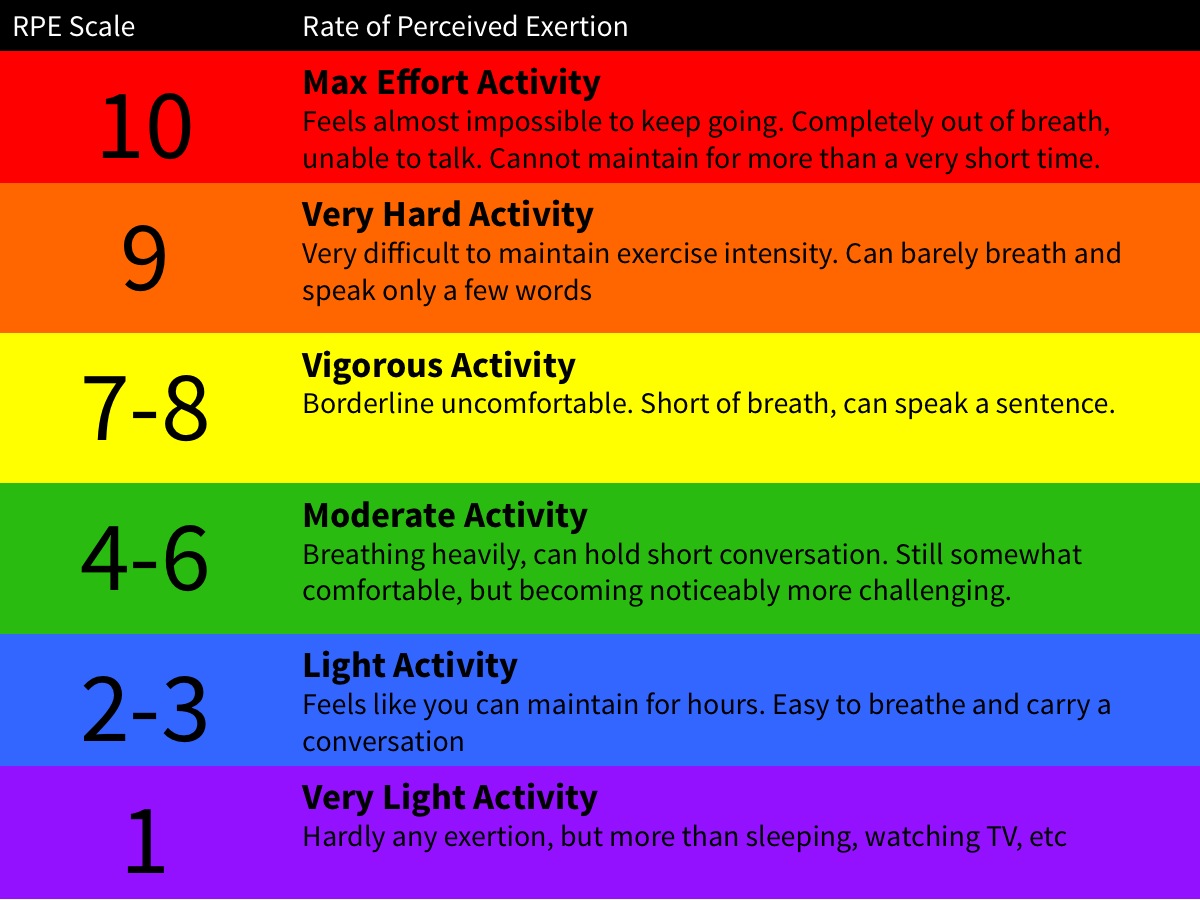
Image source: thefittutor.com
For endurance sports like cycling, coaches and athletes use heart rate zones as one of their key metrics while training. Power output (watts) is another, even more important, metric that is used in cycling to train, test your ability, and gauge progress.
Functional threshold power (FTP) is another metric used for training. It is defined as the max power (watts) that one can sustain for one hour. You can also find an estimate of FTP using a shorter 20-minute test.
Heart Rate Zones
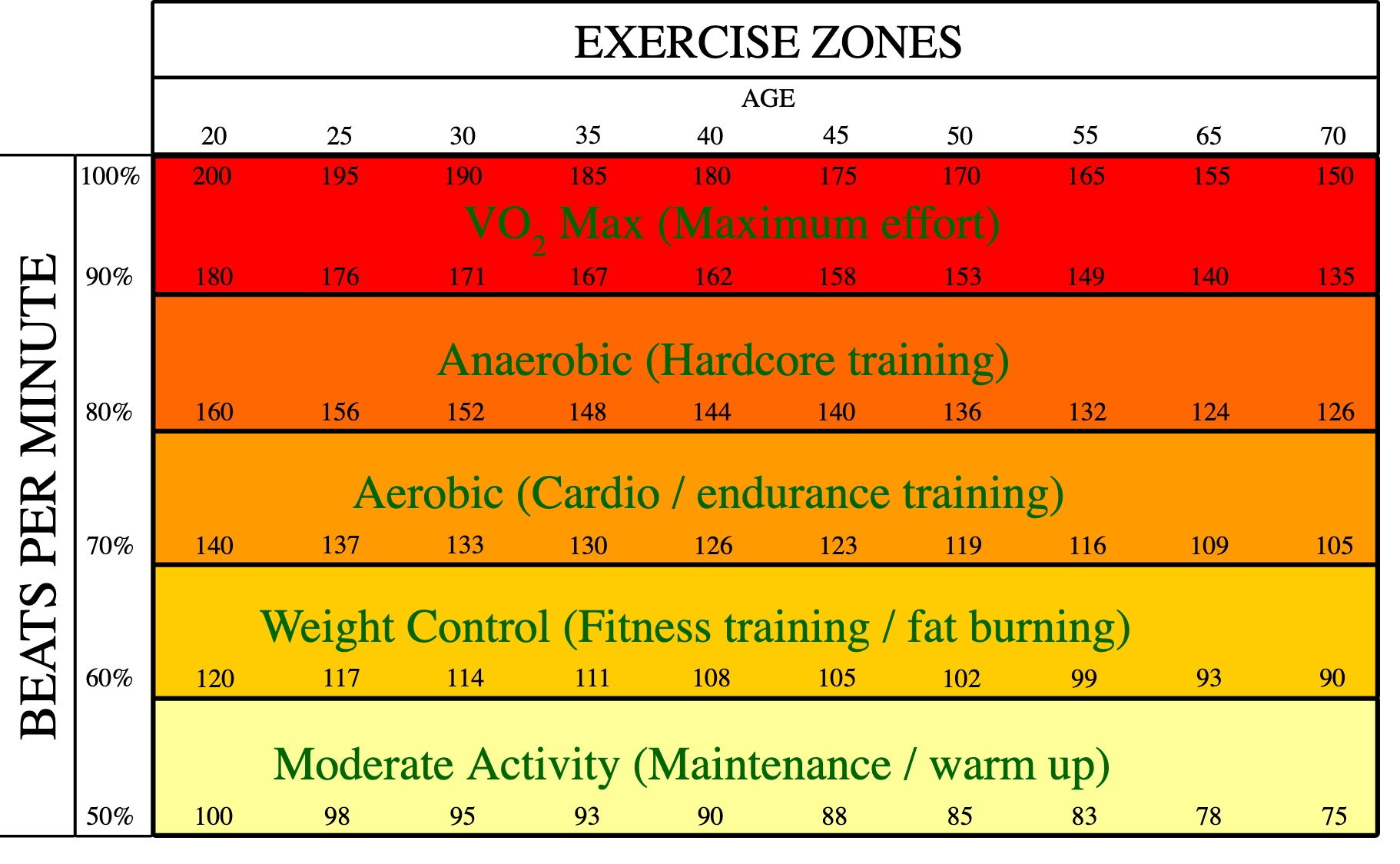
Image source: beginnertriathlete.com
Heart rate zones are based on a percentage of your maximum heart rate (MHR). To calculate your MHR use the following equation:
220 – Your age (e.g. 220 – 35 = 185)
Once you have this number, you can schedule a certain amount of time in each “zone” (this type of training requires a heart rate monitor).
The basic heart rate zones are as follows (a more complex breakdown has 7 zones):
| Zone 1 | Very light | 50–60% |
| Zone 2 | Light | 60–70% |
| Zone 3 | Moderate | 70–80% |
| Zone 4 | Hard | 80–90% |
| Zone 5 | Max Effort | 90–100% |
Power Training Zones
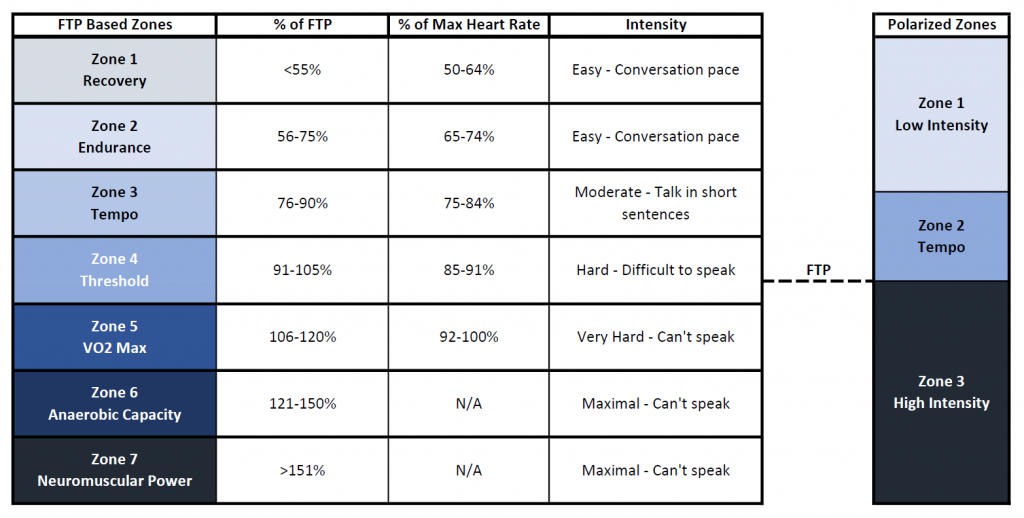
Power Training Zones work in a similar way to heart rate, using seven zones that represent a percentage of FTP. Training with a power meter is by far the best and most precise way to measure your efforts and progress quickly.
The zones are as follows:
| Active Recovery | < 55% FTP |
| Endurance | 55% – 75% FTP |
| Tempo | 76% – 87% FTP |
| Sweet Spot | 88% – 94% FTP |
| Threshold | 95% – 105% FTP |
| VO2 Max | 106% – 120% FTP |
| Anaerobic Capacity | > 120% FTP |
Goal Setting – Long Term & Short Term
Setting your goals is the first step when working towards any target. They help keep you on track toward a measurable outcome while providing motivation along the way.
Without goals, you cannot structure your training effectively. With a combination of short and medium-term goals that are measurable, specific, and achievable, you will have a clear path toward your overall goal.
Let’s take a look at a simple example goal outline:
- Complete a 100-mile endurance ride for charity
- Do 3x 80-mile bike rides
- Achieve an 18mph average over 60 miles
- Complete 8,000 feet elevation gain in one ride
- Improve climbing
- Develop muscular strength
- Improve average cycling speed
- Work on descending skills
- Perfect your ride nutrition
Progression & Adaptation
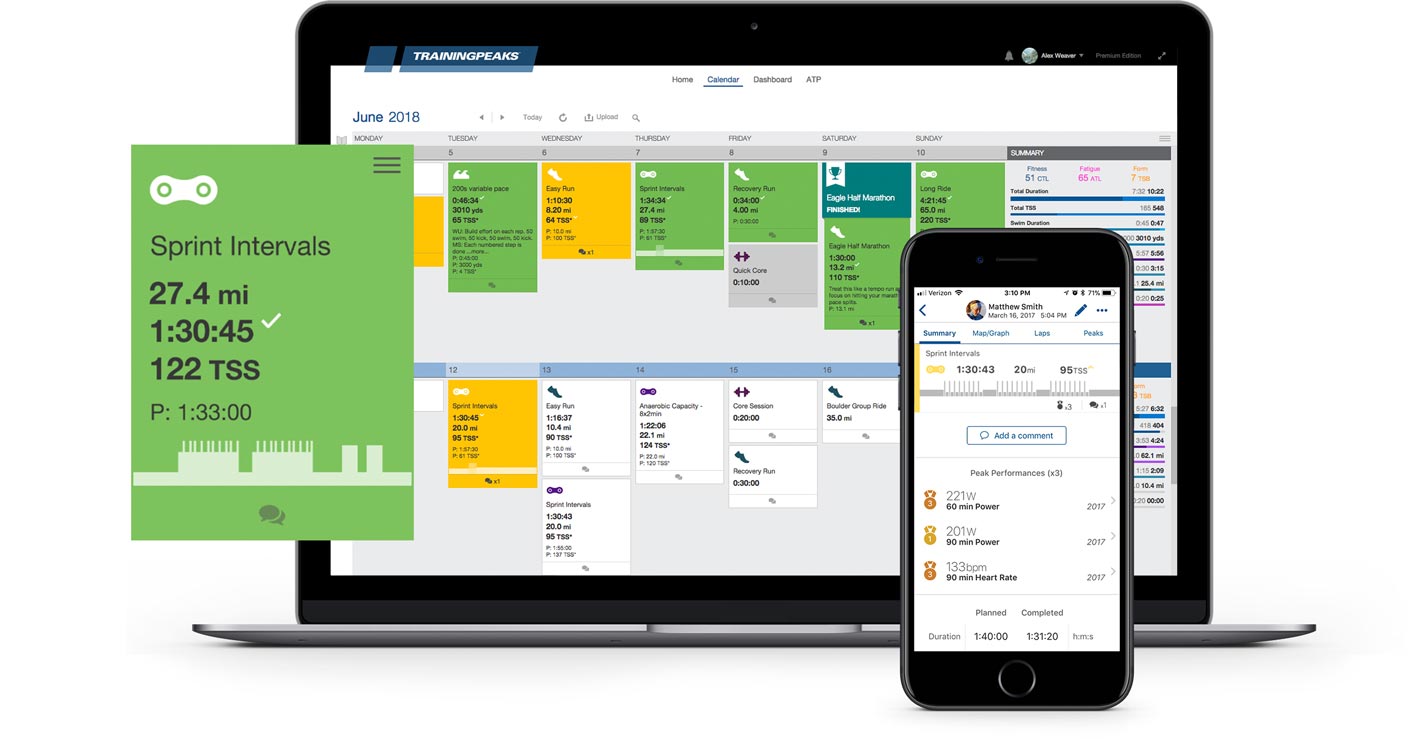
Image source: trainingpeaks.com
Your body is a master at adapting to change or stress. When you put your body under a healthy amount of stress with exercise, it adapts by strengthening, growing, and improving so it can do better the next time.
To keep your body from adapting fully and your ability plateauing, it’s important to train in different ways.
For cycling, increase volume (total time on the bike) and intensity (average heart rate/power/RPE), change the type of practice, or the duration of efforts (30-second to 35-second sprints). However, zone 2 training should take up the majority of your time on the saddle.
This variation and progression is vital to continue developing your fitness and cycling ability. With a well-thought-out and progressive cycling training plan, you can achieve your potential at the right time.
Note that each individual has a biological limit, and a good training peak plan should maximize one’s ability for a specific target on a specific date.
2. The Important Components of a Training Plan
Structured Training – Periods, Blocks, Weeks, & Days

TrainingPeaks structured planner. (Image source: trainingpeaks.com)
Using a structured plan when you are working towards a goal is the most effective way to reach the target. Unstructured plans can work, but they result in a lot of wasted energy on suboptimal efforts.
A periodical training plan is broken down into training blocks. These blocks range from three to six weeks depending on the individual’s experience, current fitness, and goals.
Each block should have a specific and measurable goal. For example, the goal “improve climbing endurance – reduce time by one minute on a local Strava segment” will focus on an area of weakness that you have and your efforts to achieve it don’t have to be bike specific (e.g. off-bike leg/core strength).
It’s best to begin training for general fitness goals and becoming more specific as the training plan progresses. Also, don’t worry if you don’t meet your goal and need to repeat the block.
Each week within a block should progress to the next. Increase the volume and/or intensity of the previous week, with a reduction in volume and intensity in the final week of the block.
The outline of each week can be outlined when building your training block. Every week will have a consistent mix of recovery and active recovery days, short rides, and long rides.
Unless you cycle as your job, it’s important to be flexible and realistic about the time you can dedicate to training.
Plan your training days as far in advance as you are comfortable with. This may be on Sunday night for the week ahead, or one or two weeks in advance, depending on how consistent your schedule is.
Test & Retest
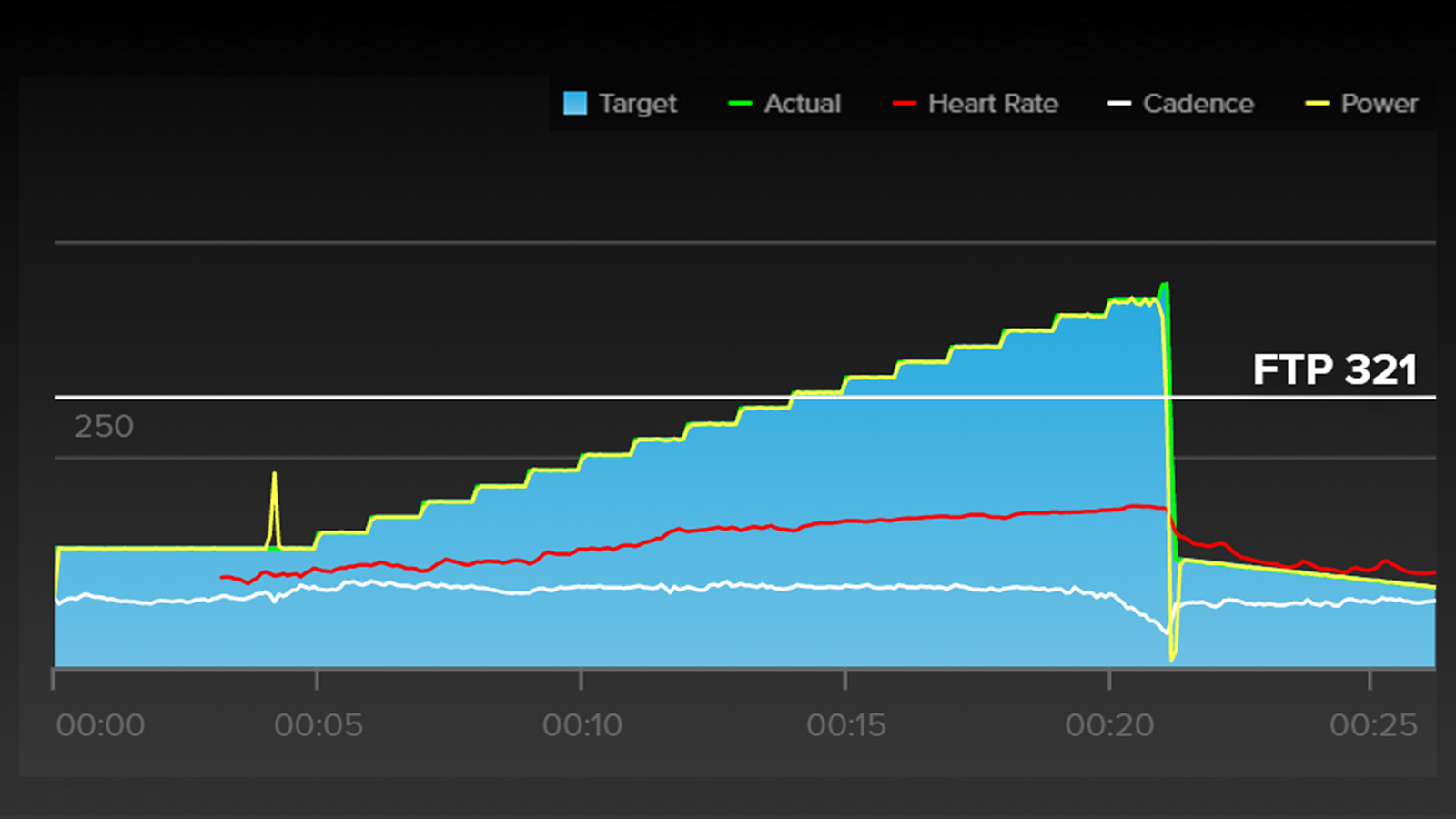
FTP ramp test on TrainerRoad.
Testing and retesting your bike fitness is another vital component for improving your performance. You can test easily using a rate of perceived exertion, heart rate monitoring, or power output on a specific route segment you know well. Indoor bike trainers are also excellent for this purpose.
Without an understanding of your baseline ability, it’s much more difficult to set the right goals and progress your training appropriately.
Likewise, if you do not retest yourself during a training period, you cannot identify where your training plan is falling short. For example, you may find you are ahead of your strength goals and behind on your climbing ability.
This reevaluation allows you to adjust and improve your training plan to help you achieve the targets you set in the beginning.
Cross-Training
A bicycle workout plan doesn’t have to be just on a bike. Finding other sports and exercises you enjoy to add to your cycling program can help you improve your cycling performance and your overall health.
Cross-training is done by adding other activities to your training plan to complement your cycling workouts. Other common exercises that cyclists incorporate include yoga, swimming, resistance training (bodyweight or weights), and running.
This part of training is frequently overlooked by new cyclists as it’s easy to become obsessed with riding as much as possible. However, by doing it correctly, you can boost your performance on the bike while avoiding imbalances and repetitive strain injuries.
Warm-Up & Cool Down
Something that many new cyclists fail to do is to adequately warm up and cool down before and after a ride. This can be done both on and off the bike and each should last five to ten minutes.
The purpose of this time is to start slowly and gradually increase your heart rate, blood flow, and muscle activation so you can avoid muscle and joint injuries.
To do this on the bike, spin at a high cadence and low effort, gradually increasing effort over the duration until you reach your desired effort for the ride. To complete a cool-down, simply reverse the process, reducing effort gradually until you finish your ride.
Indoor Bike Training
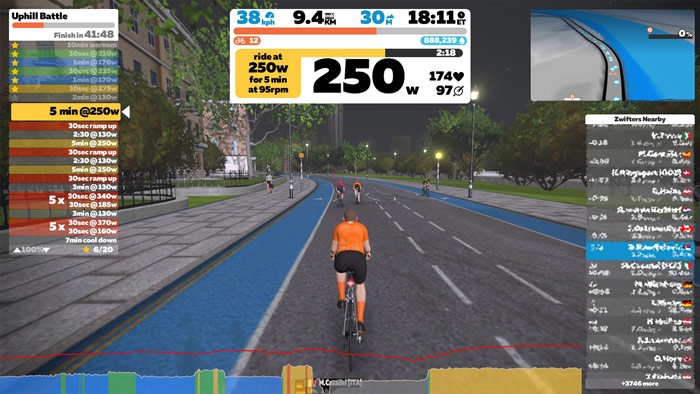
Bike workouts with rollers or an indoor trainer are an excellent way to complete sessions without preparing to go out on a ride.
They are also great for winter training, when the weather conditions for riding outside are very bad, or for fitting in a quick spin when you have free time.
Recovery, Nutrition, & Tapering
Sleep and recovery time is as important to the development of your performance as the training. During this time, your body repairs, grows, and adapts to the stress of exercise.
To allow your body to make these adaptations, you must give it the appropriate nutrition, sleep, and recovery.
Always aim for eight hours of sleep per night. While eight hours is ideal, up to nine hours may be needed after high-intensity or long-duration training sessions.
Rest and active recovery days are a key component of your training plan. Use this time to participate in relaxing activities like walking, soft tissue mobilization, yoga, stretching, among others. Check out our article on injury prevention and recovery for more details.
Eating enough of the right food is another key part of training. Try to eat a wide variety of mostly whole, minimally-processed foods. On heavier training days, be sure to adjust your food intake higher to give your body what it needs to make repairs to muscle tissue.
For more information on nutrition, check out our articles on nutrition for cycling and all about carbohydrates for more information on how to fuel the right way.
3. Building Your Own Cycling Training Plan
When creating a cycling training program to increase your bicycle fitness, be realistic about your free time. Allocate an amount of time that you are 90% confident you can stick to.
Of course, life gets in the way sometimes, so don’t worry if you have to adapt your schedule at any point.
Before you sit down to create your plan, it’s helpful to have figured out the following three things that we explained above:
- Your baseline fitness using some sort of test
- An overall goal, medium-term targets, and short-term targets
- Average time available to you per week for training
With that understood, let’s take a look at a sample from two different training programs.
The 100 Mile Cycling Training Plan
Block 1 – 6 Weeks – 8 hours/week – Improve baseline fitness – Endurance/VO2 max
Week 1
Monday
Warm-up: 5 – 10mins
Ride: 1.5hour ride with six flat sprints for 10 seconds each
Effort: Flat sections: Zone 2/RPE 2-3 – Hills: Zone 3/RPE 4 – Sprints: Full Effort/RPE 9-10
Cool-down: 5 – 10mins
Tuesday
Rest or active recovery day
Wednesday
Warm-up: 5 – 10mins
Ride: 2-hour ride – Aim for 1800 – 2800 feet elevation gain
Effort: Flat sections: Zone 2/RPE 2-3 – Hills: Zone 3/RPE 4
Cool-down: 5 – 10mins
Thursday
Rest day
Friday
Cross-training activity/sport
Saturday
Warm-up: 5 – 10mins
Ride: 4 to 4.5hour distance ride – Maintain average speed of 15mph
Cool-down: 5 – 10mins
Sunday
Rest day
Week 2
Monday
Warm-up: 5 – 10mins
Ride: 1.5-hour ride with 8 flat sprints for 10 seconds each
Effort: Flat sections: Zone 2/RPE 2-3 – Hills: Zone 3/RPE 4 – Sprints: Full Effort/RPE 9-10
Cool-down: 5 – 10mins
Tuesday
Rest or active recovery day
Wednesday
Warm-up: 5 – 10mins
Ride: 2-hour ride – Aim for 2000 – 3000 feet elevation gain
Effort: Flat sections: Zone 2/RPE 2-3 – Hills: Zone 3/RPE 4
Cool-down: 5 – 10mins
Thursday
Rest day
Friday
Cross-training activity/sport
Saturday
Warm-up: 5 – 10mins
Ride: 4-4.5hour distance ride – Maintain average speed of 15.5-16mph
Cool-down: 5 – 10mins
Sunday
Rest day and mobility work
Cycling Weekly Training Plan Beginner
Block 1 – 4 Weeks – 5 hours/week – Improve cycling fitness and technique
Week 1
Monday
Warm-up: 8 – 10mins
Ride: 75-minute ride with 500-800 feet elevation gain
Effort: Flat sections: Zone 2/RPE 2-3 – Climbing: Zone 3-4/RPE 4-6
Practice: High cadence riding
Cool-down: 5 – 10mins
Tuesday
Rest or active recovery day
Wednesday
Warm-up: 8 – 10mins
Ride: 90-minute ride with average speed 12-13mph
Effort: Flat sections: Zone 2/RPE 2-3 – Climbing: Zone 3-4/RPE 4-6
Cool-down: 5 – 10mins
Thursday
Rest day
Friday
Warm-up: 5mins
Ride: 45-minute ride with five 30 second high-intensity intervals
Effort: Flat sections: Zone 2/RPE 2-3 – Climbing: Zone 3-4/RPE 4-6 – Intervals: Zone 4-5/RPE 7-10
Cool-down: 5mins
Saturday
Rest day
Sunday
Warm-up: 8 – 10mins
Ride: 2-2.5hour distance ride
Practice: One-handed riding
Cool-down: 5 – 10mins
Week 2
Monday
Warm-up: 8 – 10mins
Ride: 75-minute ride with 700-1000 feet elevation gain
Effort: Flat sections: Zone 2/RPE 2-3 – Climbing: Zone 3-4/RPE 4-6
Practice: Descending skills
Cool-down: 5mins
Tuesday
Rest or active recovery day
Wednesday
Warm-up: 8 – 10mins
Ride: 90-minute ride with average speed 13-13.5mph
Effort: Flat sections: Zone 2/RPE 2-3 – Climbing: Zone 3-4/RPE 4-6
Cool-down: 5mins
Thursday
Rest day
Friday
Warm-up: 5mins
Ride: 45-minute ride with six 35 second high-intensity intervals
Effort: Flat sections: Zone 2/RPE 2-3 – Climbing: Zone 2-4/RPE 3-6 – Intervals: Zone 4-5/RPE 7-10
Cool-down: 5mins
Saturday
Rest day
Sunday
Warm-up: 8 – 10mins
Ride: 2-2.5hour distance ride – Maintain average speed of 12-13mph
Practice: Eating and drinking while riding
Cool-down: 5 – 10mins
Reassessment & Adjustment
Note that each week within the training block progresses from the previous until the final tapering week. To get this process correct, it is important to monitor progress and adjust expectations and targets throughout the training block.
This is because each individual responds differently to training and can progress at different rates. For example, one person may find it easier to develop power, whereas the next person might build endurance faster.
Remember, if you feel you need extra time to recover, always reduce your training volume and add more time in between rides.
Don’t do each ride at a high intensity. Stick to zone or RPE training and try to mostly do zone 2 training.
Coaches & Mentors
We hope this guide has given you the tools to make your own cycling training plan with confidence. However, it’s important to highlight the value of a coach or mentor if you want to improve your performance in anything, especially sports.
The right people have wisdom and experience gained from their own cycling career or from teaching it. For this reason, coaches and mentors are invaluable because they can look at the strengths and weaknesses of your cycling ability in an objective way, providing you with a tailored cycling workout plan and suitable progressions that may be difficult to see from the inside.
Conclusion
Creating a well-thought-out cycling training plan is something that any cyclist can do. Using this guide, you will be able to create a basic bike workout program that helps you progress logically and safely towards your goals.
Remember that time in the saddle is just as important as good rest and recovery. In other words, always be on the lookout for signs of burnout when you are training a lot, and don’t be afraid to take extra time off if you need.
All that’s left to do is start writing your own plan and go and crush your cycling goals, good luck!



